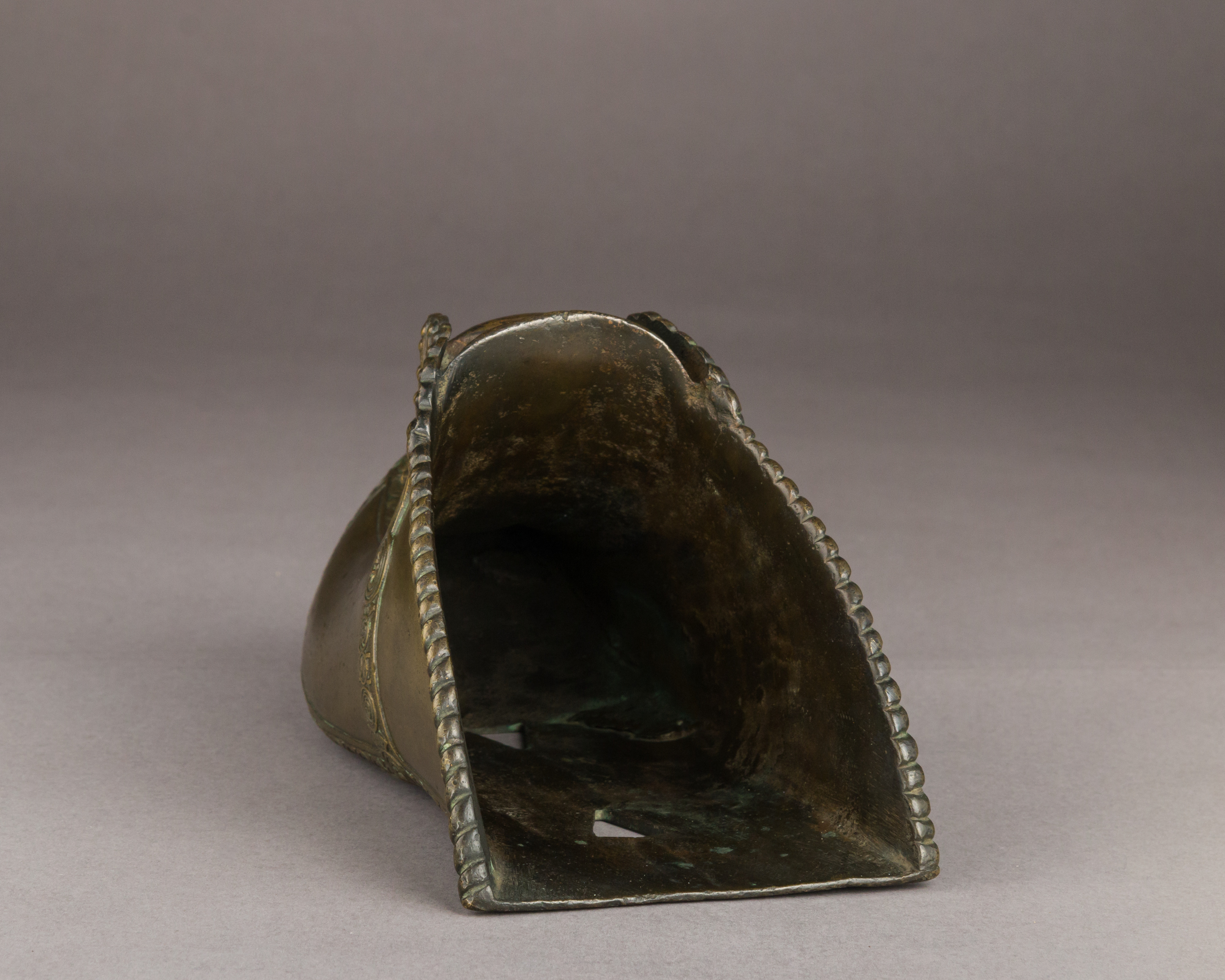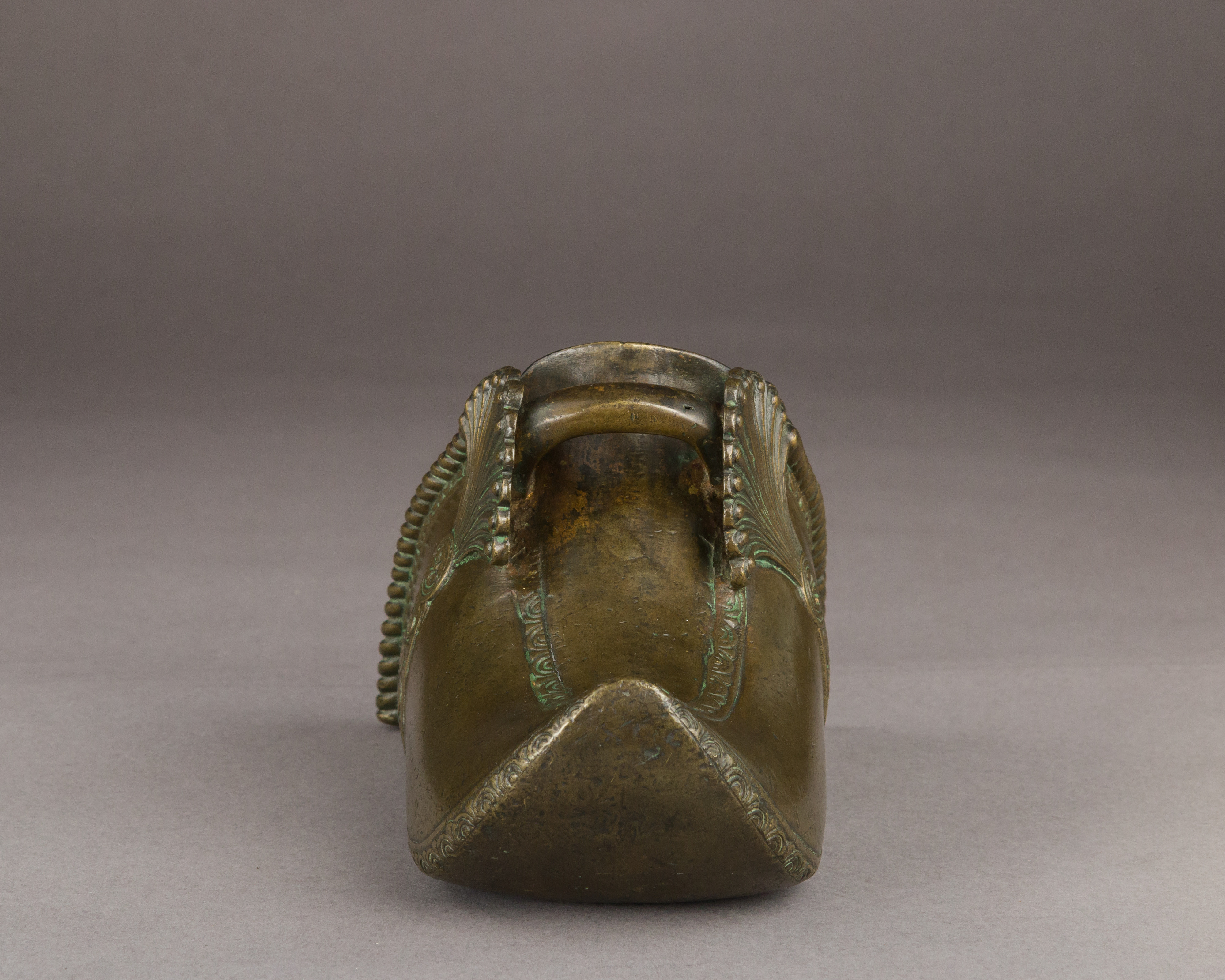Stirrup
Not on view
This slipper stirrup, cast in bronze, mimics in metal the shape and decoration of a traditional leather boot. The rope design on the edge copies the sewing of the inside leather lining found on some other examples. The high quality of the metal casting is a direct inheritance of the metalworking skills displayed by Peruvian native populations before Spanish conquest.
Introduced to South America by the Spanish in the 16th century, horses soon became an important element in the lives of many local populations, of both colonial and native origin. Because horses were highly valued, owners would dress them with beautiful and elaborate tack, especially during festivals or other celebrations. Closed stirrups, or regular stirrups covered with a leather hood called a tapadero, are still regularly used in South America, as they protect the rider’s feet when riding in the bushes.
This image cannot be enlarged, viewed at full screen, or downloaded.
This artwork is meant to be viewed from right to left. Scroll left to view more.




